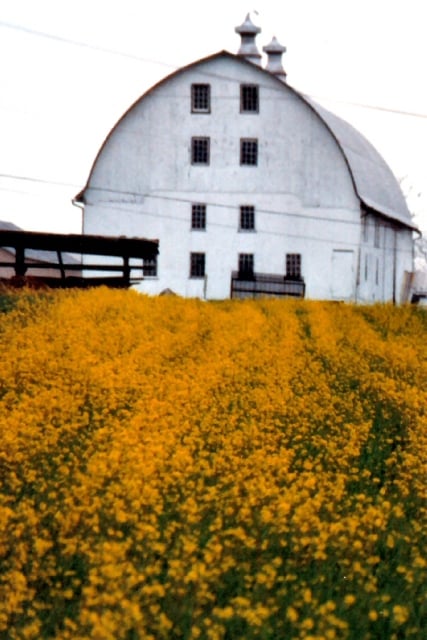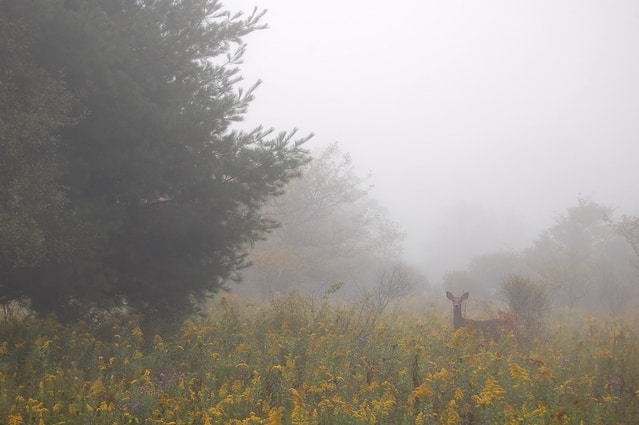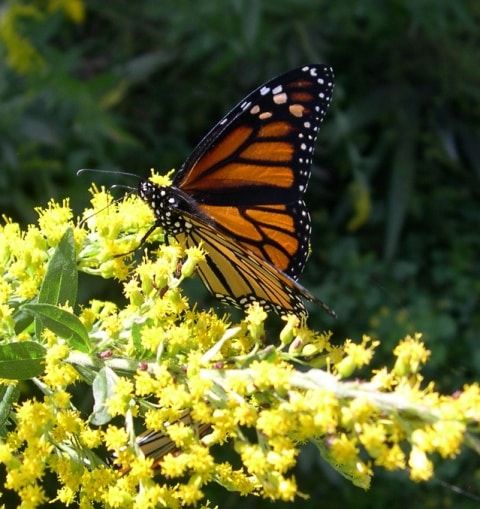Now that summer is in full swing, you might wonder if it’s too late to plant flowers. The good news is there’s still time to include summer and fall bloomers in your garden, like goldenrod. Botanically known as the Solidago species, this group of wildflowers is part of the daisy family.
Featuring brilliant bright yellow or golden flowers, goldenrod makes a showy statement in the garden from July through September. The plant is an ideal choice for borders, as well as meadows, native gardens and herb gardens.
Often found in natural settings, goldenrod is easy to grow and naturalizes in the garden, ensuring that you’ll be able to enjoy its blooms for many years to come. The eye-catching flowers are rich in nectar and attract bees, butterflies and many beneficial insects. Contrary to popular belief, goldenrod does not cause hay fever.
 (Joe Zlomek/FreeImages.com)
(Joe Zlomek/FreeImages.com)To have luck growing goldenrod in your summer garden, keep the following cultivation tips in mind.
Plant in full sun. For best blooming, locate goldenrod in an area of the garden that gets at least seven to eight hours of sun a day.
Provide good drainage. Goldenrod will grow in just about any soil type, providing that it drains well. If the area tends to remain soggy, amend with homemade or bagged compost and pumice.
 (Sandra Cunningham/FreeImages.com)
(Sandra Cunningham/FreeImages.com)
Water to establish. Fairly drought tolerant, goldenrod doesn’t require much additional water once established. When you first plant the flower, however, it’s important to keep the soil moist, but not soggy. Once new growth appears, gradually taper off on watering.
Avoid fertilizing. As a wildflower, goldenrod prefers soils that aren’t nutrient rich, so avoid feeding this plant. Overly rich soil will lead to excessive foliar growth and weak stems, but little to no flowering.
Deadhead. Cutting off flower heads of goldenrod before they go to seed keeps the plant blooming well and looking tidy. This will also keep goldenrod from reseeding, if you want to keep new plants to a minimum. When deadheading, also prune to shape.

(Bill Kuhn/FreeImages.com)
Divide periodically. Dividing goldenrod every two to four years in late fall or early spring will create stronger, healthier plants. Dig up the plant’s rhizome (underground stem) and cut in half or thirds with a sharp knife. Replant each section.
Enjoy cut flower arrangements. Goldenrod makes a stunning flower show indoors. Cut and create loose, colorful arrangements.
Julie Bawden-Davis is a garden writer and master gardener, who since 1985 has written for publications such as The American Gardener, Organic Gardening, Wildflower, Better Homes and Gardens and The Los Angeles Times. She is the author of seven books, including Reader’s Digest Flower Gardening, Fairy Gardening, The Strawberry Story, and Indoor Gardening the Organic Way, and is the founder of HealthyHouseplants.com.

